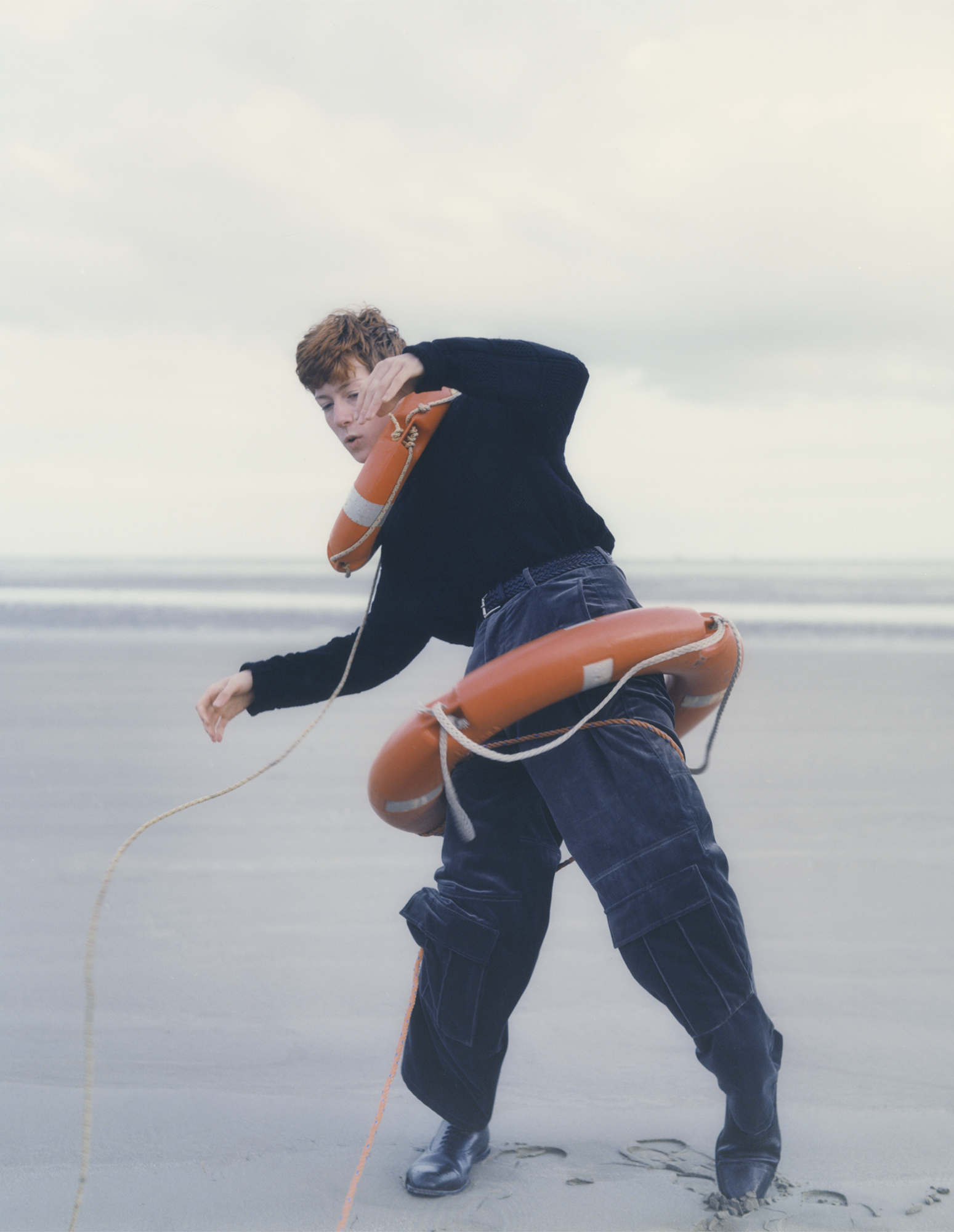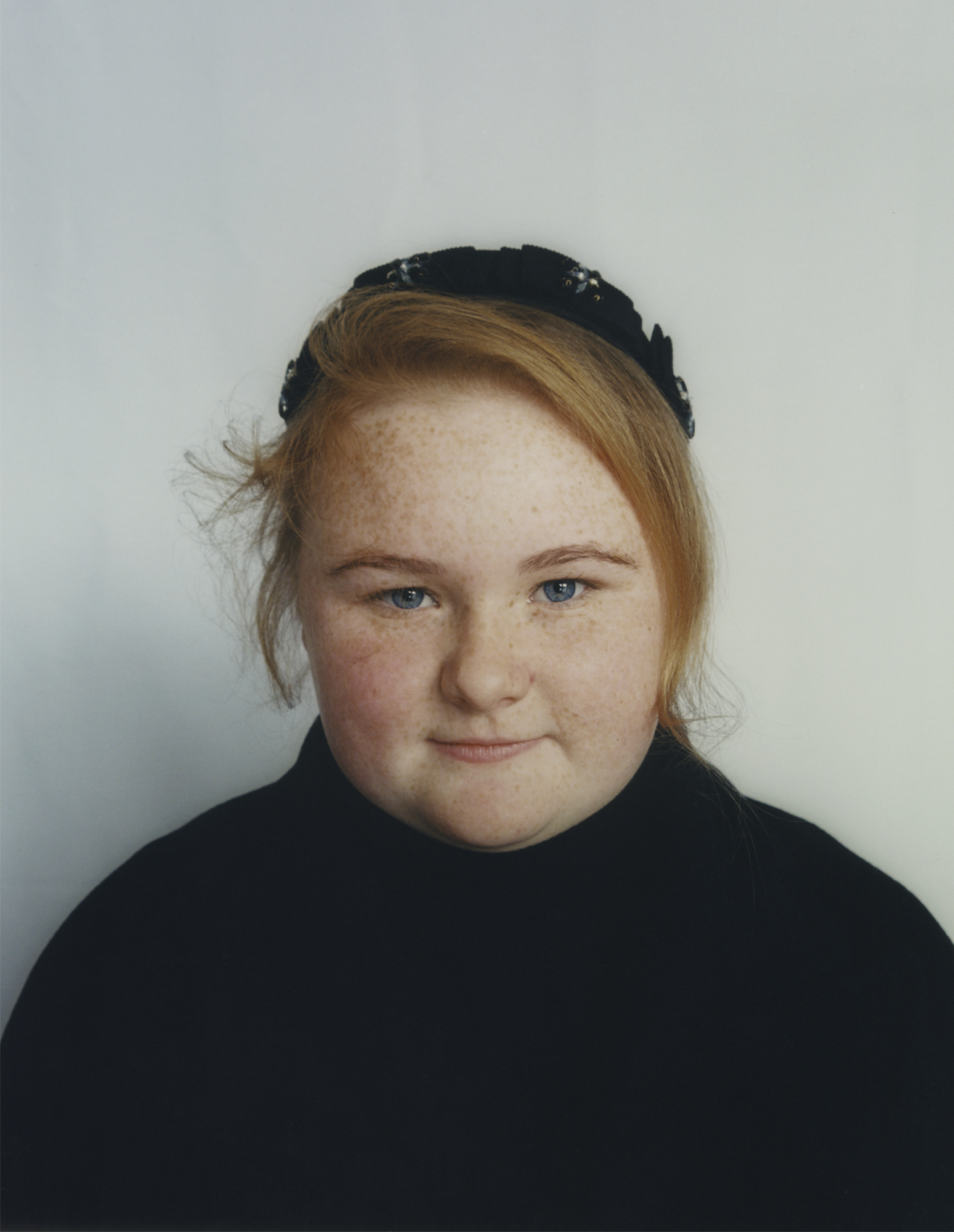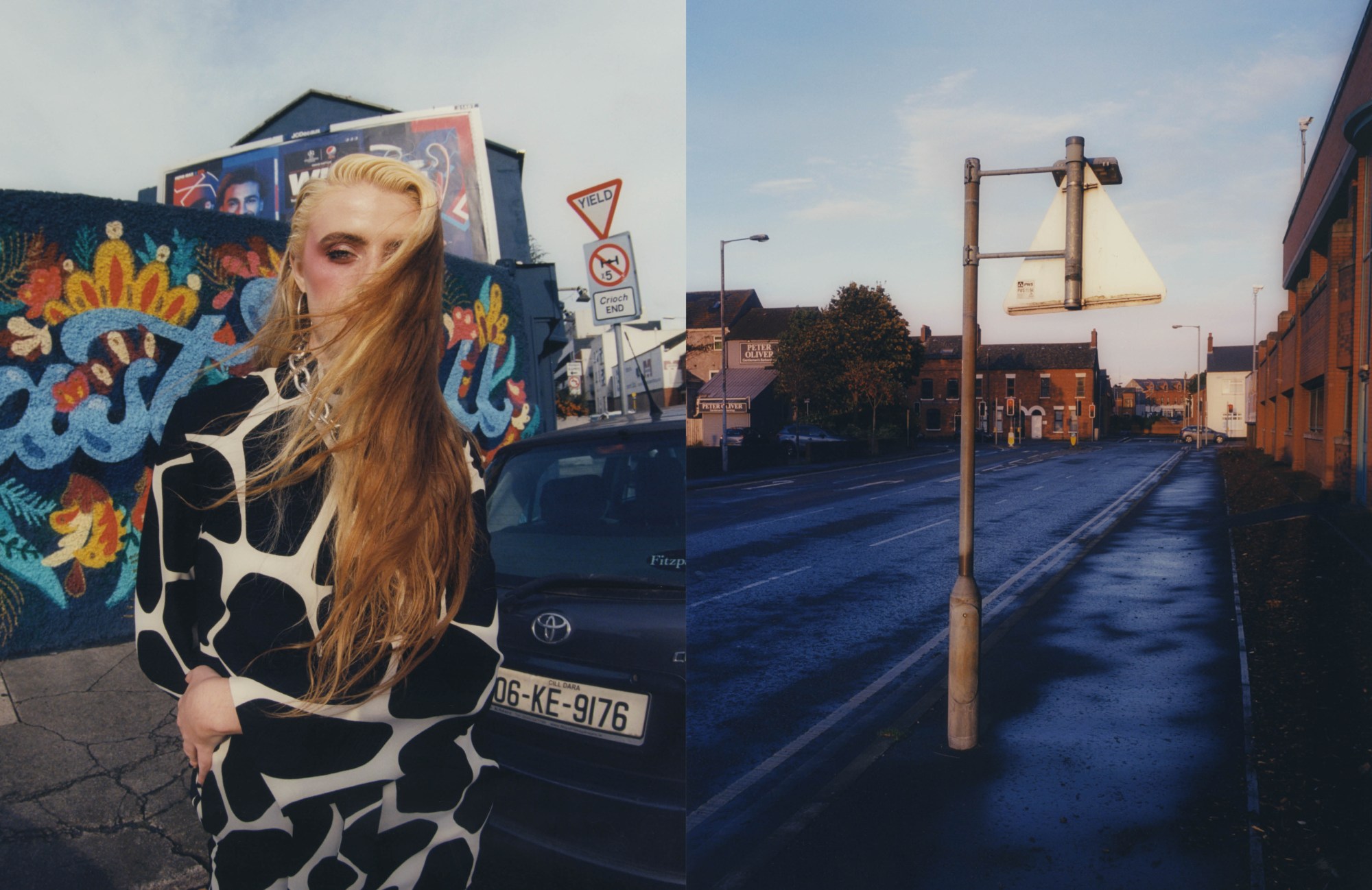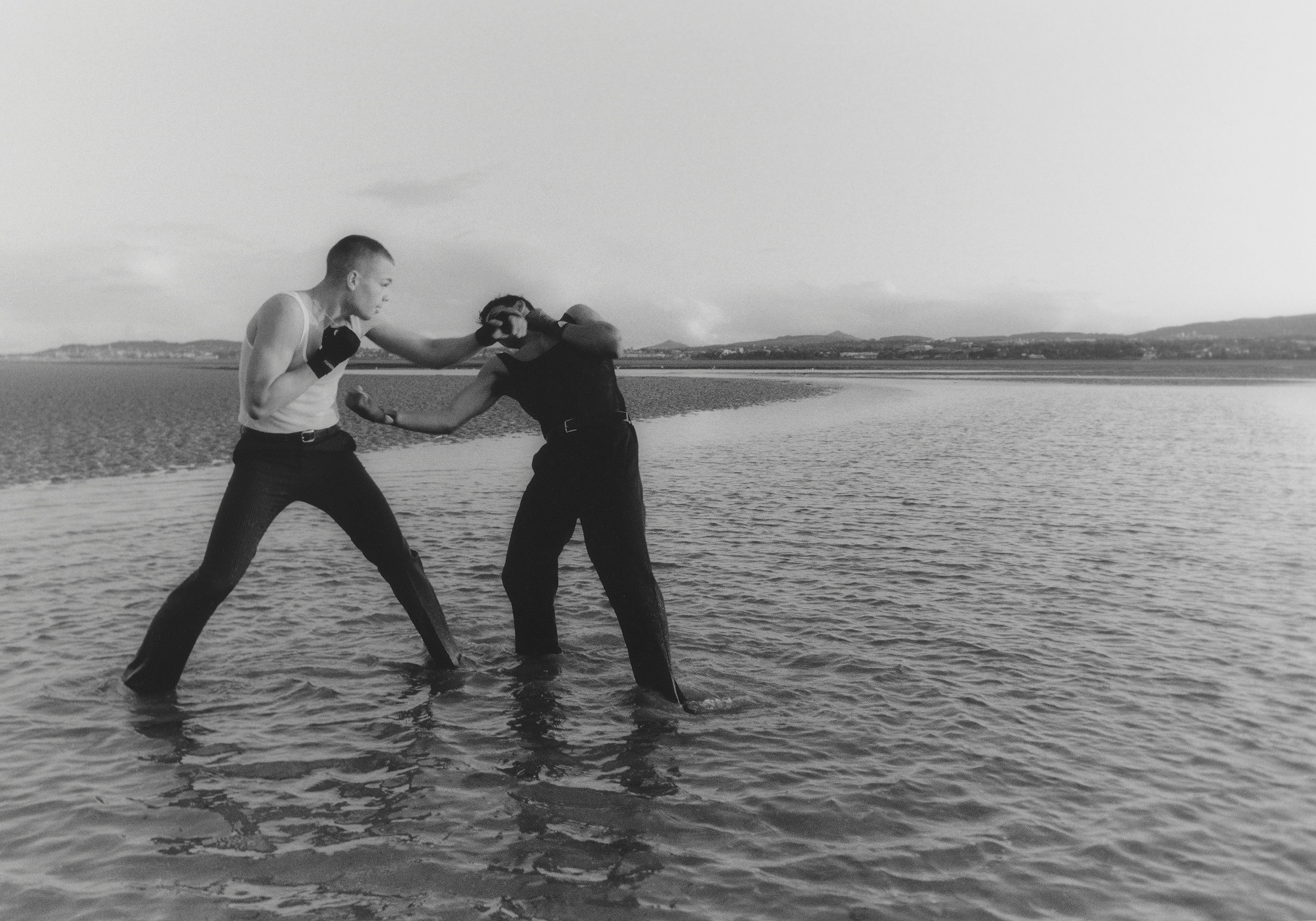This story originally appeared in i-D’s The Get Up Stand Up Issue, no. 358, Winter 2019. Order your copy here.
Around 499km of muddy field has obsessed the British media for the past three years. Reaching from South Armagh to Derry, Donegal to Monaghan, the border between the Republic of Ireland and the North has become a flashpoint of every boring, Brexit-related conversation you’ve been subjected to since June 2016. Or at least, it definitely has if you’re Irish.
As the debate about Brexit has rolled on (and on and on and on…) the Irish border continues to be a thorn in the side of the Tories, the DUP and anyone who doesn’t want to listen to lads in black turtlenecks ramble on about Irish reunification on Question Time. Every few weeks a bemused and well-meaning English journalist will take a flight in, walk slowly over a patch of grass while theorising on what it all means for Irish people and what it all means for Irish identity.
Then they fly back to London and push that pressing question to the back of their minds again. The Irish question has occupied more space in mainstream political discourse than it has in years. It’s become so notorious that there’s now even a parody Twitter account for the border itself, occasionally posting jokes about how contentious it’s become as a geographical monument.

That attention though, has had unfortunate implications for young Irish people on either side of the border. Reactionaries and paramilitary organisations in the North have seized on the media attention surrounding Brexit and the backstop as an excuse to try to drag the province back to its recent violent past.
In April this year, young journalist Lyra McKee was shot dead while covering violence in Derry’s notorious Creggan estate. When the New IRA claimed responsibility for the murder, many people, Lyra’s partner Sara among them, claimed that the organisation were showing off for the cameras by stoking up a riot and firing into the crowds gathered. The presenter Reggie Yates had been visiting the city that evening, filming a documentary on young people living in “extreme and unusual situations”.
For all its media ubiquitousness though, the issue of the border and the whole discourse surrounding Brexit doesn’t factor hugely in to what it means to be young and Irish today. The fact is that for all the attention and energy being focused on this issue, there are many more issues being ignored, ones which actually affect young people on either side of the border.

In Dublin, what was once an exciting hub of opportunity and a bustling capital city has become a cold house for anyone except the very rich. Young people are being routinely priced out of the city, with rents in the capital now reaching a level that even the housing minister admits is “unsustainable”.
For those who can afford to move back in with their parents in the suburbs, the situation is depressing but manageable. For those without parental support, or who come from Ireland’s sleepy rural villages and towns (increasingly unconnected by the railways), the situation is less tenable. Homelessness in Ireland is spiralling, with over 10,000 people now homeless across the country. The majority of these are concentrated in Dublin, where over 4,000 adults and nearly 3,000 children are either living in emergency accommodation or on the streets.

In the North, Stormont, Northern Ireland’s local government, has been suspended for almost three years. Without a functioning devolved government, Northern Irish young people have had to watch decisions being made on their behalf from London. Many of those decisions are framed around Brexit, which has become the focus of a renewed interest in the “Irish question”.

Brexit is a concern for people in the North, but there are plenty of other problems gripping the province. Since the year 2000 there have been 4,500 suicides in Northern Ireland. Rates of suicide have doubled in the 20 years since the ceasefire, resulting in a major mental health crisis. Charities, activists and emergency services in Ulster are facing the brunt of a wave that’s affecting young people, particularly young men, but which is still eclipsed in column inches and media attention by the Irish border.
All of this, admittedly, paints a pretty grim picture of young Irish identity today. The reality is much more multifaceted. In fact, the past few years have seen the rise of a new class of Irish activists, a new generation of politically engaged youth who are fixed on determining their own future and on forging a new vision of Irish identity. They come from all counties, all religions and all ages, from both sides of the border.

In the Republic of Ireland, it was this new generation that fought tirelessly to repeal the Eighth Amendment and give women the right to choose. The same generation, once the battle was won in the Republic, moved their attention across the border to the North, and thanks in no small part to their tireless campaigning, Northern Ireland finally decriminalised abortion and same sex marriage earlier this month, in spite of the DUP’s draconian efforts to stop progress. In Belfast’s Ulster Sports Club, there’s a newly opened inclusive nightclub in what was once a male-dominated space. The music was turned off as the clock struck midnight on October 21, the night these laws came into place, and punters counted down the seconds and then embraced each other as they greeted, literally and figuratively, a new day. It was hard not to feel emotional watching these scenes, or the ones in the days that followed, as LGBTQ couples celebrated their love and ongoing criminal proceedings against women desperate enough to undergo abortion, were finally abandoned.

When photographer Sam Rock and i-D Senior Fashion Editor Max Clark shot a portfolio of young Irish people for this issue of i-D, they asked each of the people they photographed what they thought of Brexit. It’s a question that Irish people are used to now. To outsiders, this is thought to be our biggest concern, after all. But one after another, they just shrugged the question off.
They were more interested in talking about education in Ireland, about the changing face of their communities, about bullying and social media and the music they liked to listen to. “The images of a hard border are almost surreal to me,” said 18-year-old Sean Cusack. Sean is a “ceasefire baby”, a member of the post-conflict generation who grew up in the shadow of The Troubles and is yet too young to remember the brutal violence. He added: “Brexit doesn’t cross my mind too often.”

Maybe this is the main misconception that Irish people find themselves having to correct again and again. Being Irish in 2019, as with any nationality or culture, involves a myriad of influences and identities. Brexit does matter to Irish people, especially the closer you live to the border. But the assumption that we spend our lives looking to the UK, defining ourselves by the political mistakes and mishaps of our closest neighbour and waiting to see what will become of us by virtue of those decisions, is quite simply wrong. There are much more pressing issues, much more beautiful things to celebrate at home, in a changing country that’s at last embracing modernity and becoming more diverse.
The border, after all, is one stretch of land in a whole island.





Credits
Photography Sam Rock
Styling Max Clark
Hair Benjamin Muller at Management + Artists.
Photography assistance Simon Wellington.
Styling assistance Joe Palmer, Giovanni Beda and Gal Klein.
Production Carmel Reeves Dion at 1888 Production.
Casting Gabrielle Lawrence at People File.
Models Jack, Callum, Garrett Nolan, Corey McNeil, Ceallaigh Gorman, George Poots, Jack Smyth, Rebecca Kelly, Niamh, Max O’Donoghue, Leagh O’Connor, Gavin, Sean Cusack, and Maikas Urnikis at Not Another Agency, Abbey Maguire, Shelley Parkinson, Caitlin Rose James, Kim Connolly at Phoenix Performing Arts College, Dublin.
Lead image credits Maikas wears tank and trousers Dries Van Noten SS20. Belt HTC. Socks Pantherella. Shoes Manolo Blahnik x Grace Wales Bonner. Sean wears tank Dries Van Noten SS20. Trousers Sandro SS20. Belt Anderson’s. Socks Pantherella. Boots Manolo Blahnik.
